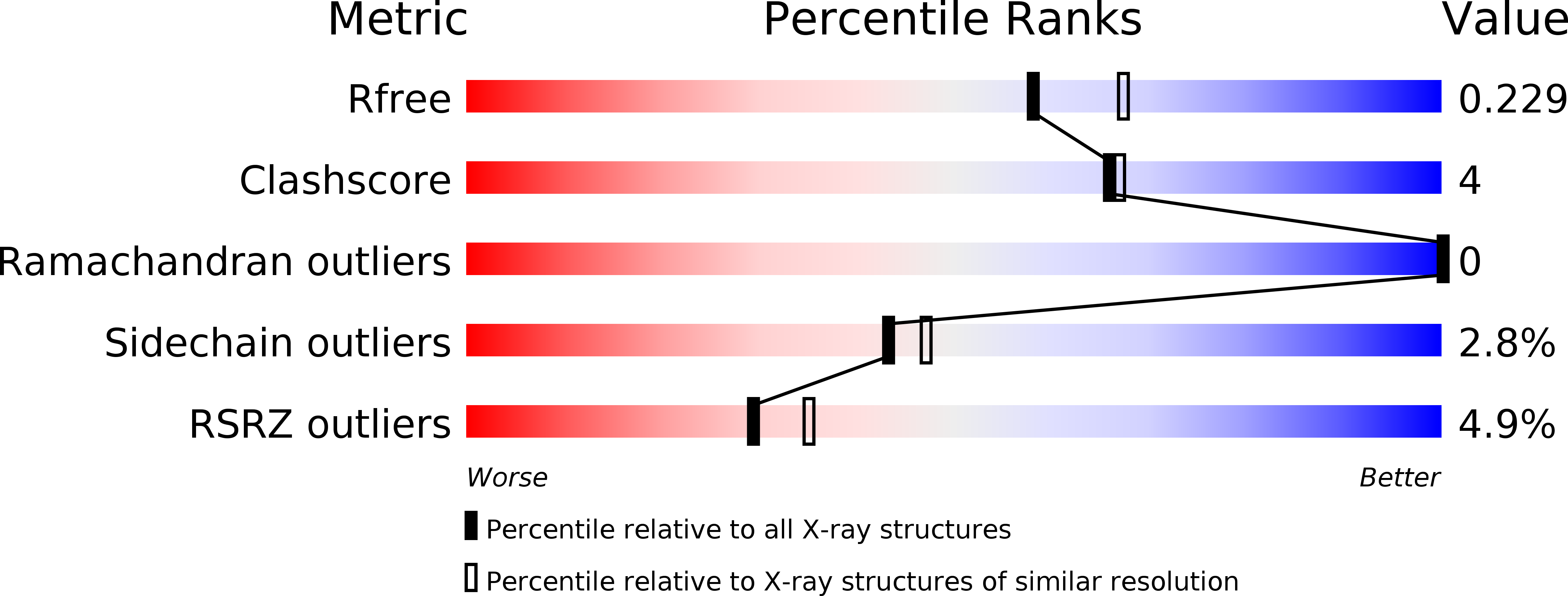The crystal structure of bacteriophage HK97 gp6: defining a large family of head-tail connector proteins.
Cardarelli, L., Lam, R., Tuite, A., Baker, L.A., Sadowski, P.D., Radford, D.R., Rubinstein, J.L., Battaile, K.P., Chirgadze, N., Maxwell, K.L., Davidson, A.R.(2010) J Mol Biol 395: 754-768
- PubMed: 19895817
- DOI: https://doi.org/10.1016/j.jmb.2009.10.067
- Primary Citation of Related Structures:
3JVO - PubMed Abstract:
The final step in the morphogenesis of long-tailed double-stranded DNA bacteriophages is the joining of the DNA-filled head to the tail. The connector is a specialized structure of the head that serves as the interface for tail attachment and the point of egress for DNA from the head during infection. Here, we report the determination of a 2.1 A crystal structure of gp6 of bacteriophage HK97. Through structural comparisons, functional studies, and bioinformatic analysis, gp6 has been determined to be a component of the connector of phage HK97 that is evolutionarily related to gp15, a well-characterized connector component of bacteriophage SPP1. Whereas the structure of gp15 was solved in a monomeric form, gp6 crystallized as an oligomeric ring with the dimensions expected for a connector protein. Although this ring is composed of 13 subunits, which does not match the symmetry of the connector within the phage, sequence conservation and modeling of this structure into the cryo-electron microscopy density of the SPP1 connector indicate that this oligomeric structure represents the arrangement of gp6 subunits within the mature phage particle. Through sequence searches and genomic position analysis, we determined that gp6 is a member of a large family of connector proteins that are present in long-tailed phages. We have also identified gp7 of HK97 as a homologue of gp16 of phage SPP1, which is the second component of the connector of this phage. These proteins are members of another large protein family involved in connector assembly.
Organizational Affiliation:
Department of Biochemistry, University of Toronto, Toronto, Ontario, Canada M5S 1A8.

















